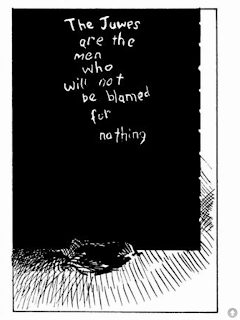Achewood, by Chris Onstad, is essentially my all-time favorite comic series. Beginning its life as a webcomic, it has been published online since 2001, with most of its updates tapering off (yet not quite stopping!) sometime last year.
Initially coming off as an absurdist fantasy comic featuring talking animals that live their lives just beneath the cities of humans, it has slowly morphed into an absurdist fantasy comic featuring talking animals that live their lives in a reality almost, but not quite, entirely like our own.
The strip's 'main characters', Roast Beef and Ray, form an incomparable duo whose talents and frailties drive obscenely deep and gripping characterizations that shine through powerfully despite the insanity of the world around them. As I recall one commenter adding: "One of the deepest reflections on life has been brought me by a cartoon cat. What the hell."
I initially fell in love with Achewood specifically because of its absurdist humor, and Onstad's flair for creating a vibrantly realistic world through a comic which, I believe, was constructed mostly in Microsoft Powerpoint. The character's incredible adventures all echo something deep and resonant with the reality of life - their triumphs, their failures, their frustrations, and their blind, dumb luck.
I feel it also taught me two very important things about narrative and art - that being, a powerful narrative obscures all flaws in the art, and art that has exactly enough is all you need. Onstad's incredible talent for conveying the emotions of his characters with subtle expressions and movements between panels gives Achewood's humor a power that it would not otherwise have.
Achewood has not received the sort of attention that I feel it really needs to - though from what I understand, it did provide Onstad with a source of income for nearly a decade, so that's probably Good Enough.
.gif)
.gif)
.gif)
.gif)
.gif)
.gif)













































